David Constantine wonders if there isn’t something more to life than meets the eye.
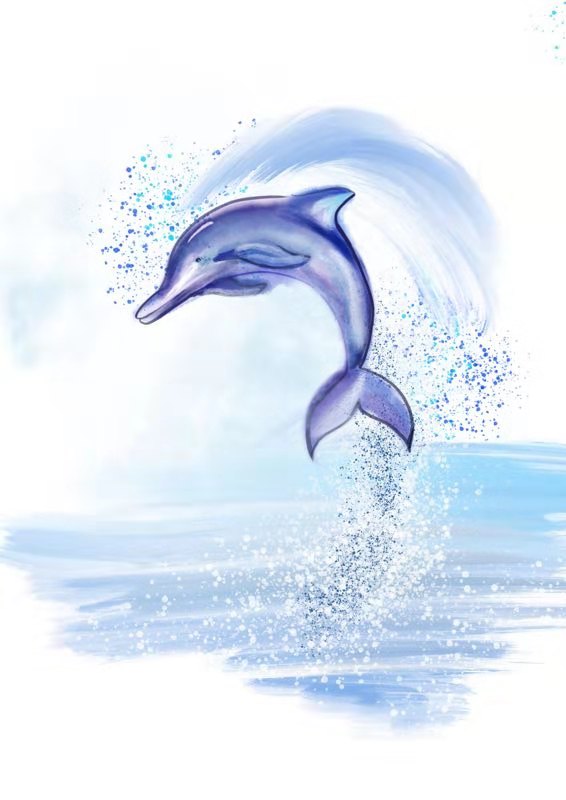
“A writer summoning the power of language to do its utmost.”
Oxford Times
Before you read today’s poem, ask yourself: when was the last time you laughed? Not a polite smile, but a real belly-laugh, the kind that bursts out of you uncontrollably. Or when was the last time you ran, not to get fit on a treadmill, but just to feel the wind and rain on your face? Or danced unselfconsciously? Or sang at the top of your voice? Or wrote a poem? Or any one of a thousand things children do without ego, unconstrained by notions of good behaviour, what is right or wrong, proper or improper. In Watching for Dolphins there’s an idea, the children would see dolphins if anyone would, that encapsulates what the poem is driving at. The adult world is mundane, but we’re so caught up in it that we’ve lost the ability to see the ‘real’ world, a world we all knew and loved instinctively as children, a world of music, laughter, play and excitement. A world of dolphins.
In the summer months on every crossing to Piraeus One noticed that certain passengers soon rose From seats in the packed saloon and with serious Looks and no acknowledgement of a common purpose Passed forward through the small door into the bows To watch for dolphins. One saw them lose Every other wish. Even the lovers Turned their desires on the sea, and a fat man Hung with equipment to photograph the occasion Stared like a saint, through sad bi-focals; others, Hopeless themselves, looked to the children for they Would see dolphins if anyone would. Day after day Or on their last opportunity all gazed Undecided whether a flat calm were favourable Or a sea the sun and the wind between them raised To a likeness of dolphins. Were gulls a sign, that fell Screeching from the sky or over an unremarkable place Sat in a silent school? Every face After its character implored the sea. All, unaccustomed, wanted epiphany, Praying the sky would clang and the abused Aegean Reverberate with cymbal, gong and drum. We could not imagine more prayer, and had they then On the waved, on the climax of our longing come Smiling, snub nosed, domed like satyrs, oh We should have laughed and lifted the children up Stranger to stranger, pointing how with a leap They left their element, three or four times, centred On grace, and heavily and warm re-entered, Looping the keel. We should have felt them go Further and further into the deep parts. But soon We were among the great tankers, under their chains In black water. We had not seen the dolphins But woke, blinking. Eyes cast down With no admission of disappointment the company Dispersed and prepared to land in the city.
We are presented with a fairly ordinary, humdrum scene: passengers travelling on a ferry are watching for dolphins somewhere in the sea around them. But we soon sense that the title of the poem is a bit of misdirection. They are not just idly watching; they are really searching, desperate to see some sign of these beautiful animals playing. It becomes clear that these city people are craving some kind of connection with the natural world, a connection they seem to have lost. Constantine’s poem reminds us that we too are animals, mammals like the dolphins, and are capable of unfettered joy, play, spontaneity and communion with our environment (expressed here as our element).
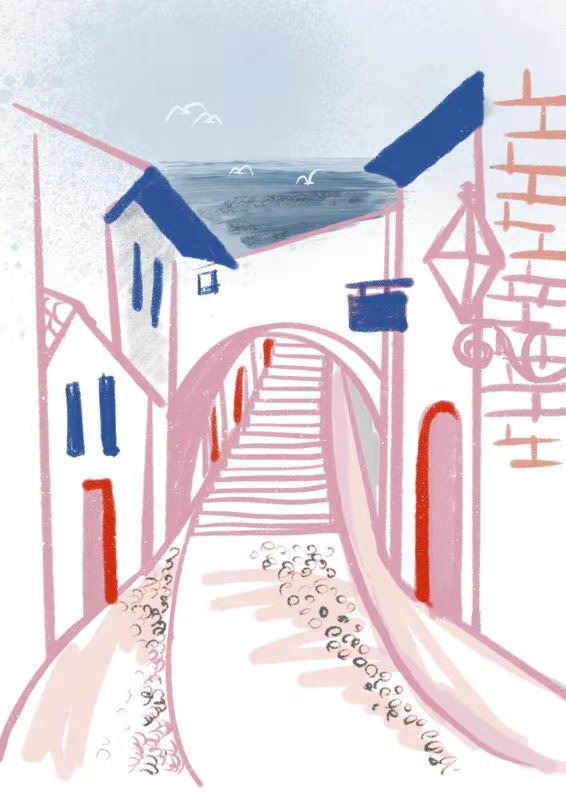
That’s why the poem takes the form of an epic-narrative, the most famous examples of which might be Homer’s Odyssey and Iliad. This long form of epic poem has all but disappeared in the age of Twitter and mini-sagas. So even the form rails against the limitations of the modern world and encapsulates a desire to be transported to a place – or, rather, time – when epic adventures and transcendent moments are still possible. Piraeus is a Greek port city and the Aegean is the waterway between Greece and Turkey. But even if you don’t know where these places are, just listen to the grand and ancient sound of the names and let yourself be transported to a quasi-historical time and mythological place where sea-monsters, sirens and satyrs still exist. Read the first verse out loud, making sure to notice the sounds of the end-words (last words on each line). Can you hear the rhymes? Piraeus and purpose are, as near as need be, full-rhymes. Lose and bows are half-rhymes (also known as near-rhymes or slant-rhymes). Rhyming plays into the epic feel Constantine wants to create, and suggests a playfulness that will later come to be associated with dolphins.
Constantine imagines all of us as passengers on a ferry, prisoners of the modern but mundane, ‘ordinary’ world. This world is small – look how all the passengers are packed into the saloon through small doors – and very tightly proscribed. Our artificial environments are designed to insulate us from any other element: the ferry and saloon insulate and confine the passengers, keeping them away from the ‘special’ world (represented by the sea and sun and the wind). It’s not until the final stanza that the invisible restrictions of our lives are clearly visible: chains, black water and among the great tankers are metaphors for entrapment, disappointment and a sense of being lost in the ever-shifting maze of the modern world. Some may realise this (certain passengers) while others may carry on their lives unaware. I like to think all of us can, from time to time, feel these possibilities throbbing away somewhere deep in our ancient, mammalian brains.
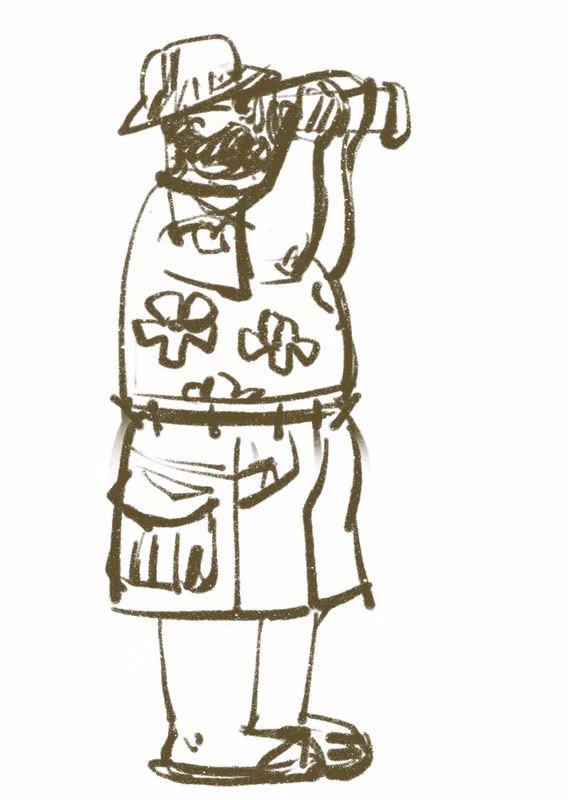
This sublimated feeling is represented through the motif of ‘watching.’ Look how, to begin with, each stanza contains diction referring to ‘looking’ or ‘seeing.’ Everyone is watching and waiting for something, even if they don’t know what that ‘something’ is. In stanza 1 you have noticed, looked, watch and saw; Stanza 2 gives us photograph, bi-focals and see. (In these examples, Constantine suggests our vision is distorted: we need equipment to help us see clearly); in the third stanza you can find gazed. But, as the poem goes on and nothing happens, the language intensifies. ‘Watching’ transforms into ‘wishing,’ so in stanza 4 the lexical field changes: you’ll see implore, wanted, prayed and longing.
What is it people are expecting to see? I’m not sure that it can be exactly quantified. The word undecided in line 14 suggests the passengers in the poem don’t know either. Dolphins are the symbolic expression of that need for something else, something undefinable but extraordinary. There’s a religious dimension to the images in stanzas four and five. Praying is repeated as prayed, and the cymbal, gong and drum are instruments used in religious ceremonies. Pointedly the word epiphany means a manifestation of the Divine or supernatural. The word is from Greek, meaning ‘reveal,’ and is most associated with the moment when Christ was presented to the Magi (Three Kings) who declared him the manifestation of God. This use of the word strengthens the idea of revelation, a sudden understanding. I’m not sure the people on the boat know what exactly it is that they are missing, but the religious connotations of the language suggest their inner, spiritual lives are lacking.

As time passes, then, they start to look for clues, more and more desperately, in the natural world. They worry about whether the flat calm sea is a sign, like the ‘calm before the storm.’ Or they look for mirages in the mix of elements: sea the sun and the wind between them raised / to a likeness. In literature, when people’s concerns or developments in a story are reflected in the background setting, particularly a natural setting, this is called the pathetic fallacy. People’s belief in such things – signs, symbols, superstitions – reflects their longing for an alternative to everyday mundanities. In an epic-narrative, the ‘herald’ is a conventional character who brings news of a great event or momentous happening. The seagulls are pointedly described as a sign, their screeching a symbolic herald of something important approaching. I like how Constantine explores people’s tendency to read meaning into such signs. Whether the sea is flat or rolling, whether the birds are diving from the sky or sat in a silent school, the passengers crave significance either way.
Existential longing is expressed through elements of form as well. Think of each stanza as a little box, trapping the words inside. But, like the passengers who prefer to be out on deck, not all the sentences are content to be restrained inside a box. Constantine employs enjambment (a technique in which sentences continue without break or pause into the following lines) between stanzas so that words seem to spill from one to another, expressing a desire to break free of restriction. Repetition (day after day), hyperbole (every face) and rhetorical question (sat in a silent school?) thicken the quality of longing in the poem. By the time the climax arrives, the tension is almost unbearable.

Enter then the symbolic dolphins: they represent a range of desires – the desire to play, be free, be spontaneous, to reconnect with nature – that have no way to be expressed in the modern world. The penultimate stanza is crammed full of sublimated desires. Had they seen the dolphins, look how the passengers would have laughed and lifted the children up / Stranger to stranger. Just this one line alone infers three unfulfilled desires: for laughter; to give our children a sense of wonder; to delight in spontaneous communion with other people. Watching the dolphins leap and looping the keel would have provided a conduit for the expression of those needs. The desire for a spontaneous release of emotion is further expressed through sound. Take a look at the first lines of stanza six:
Smiling, snub nosed, domed like satyrs, oh
We should have laughed and lifted the children up
Constantine blends types of alliteration (sibilant S with nasal M,N and assonant O) in the first line, suggesting the release of all those bottled-up feelings; this is made explicit at the end of the line with the onomatopoeia, oh. Blending softer consonant and vowel sounds like this is a technique called euphony, which brings to life the celebrational sound imagery of the previous stanza (all those cymbals and drums) and suggests the moment of epiphany has arrived. The second line reinforces the feeling of rapturous release with a pair of quick L sounds. In actual fact, L is more important than you might think. Alliteration of L, R and W sounds is called liquid. You’ll find many examples here: try with a leap they left their element or heavily and warm re-entered / Looping the keel). Liquid alliteration gives this stanza a watery, quicksilver feel perfectly suited to the sight of dolphins playing in their natural habitat. And the poem’s half-hidden rhyme scheme suddenly comes into its own: this verse is happy to pair oh with go and entered with centred.
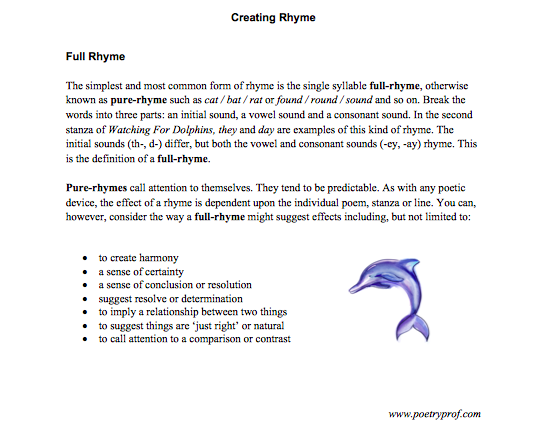
Importantly, though, this wonderful, cathartic experience didn’t happen; it is expressed only through the conditional tense (should, which you can read as ‘would’). If you’ve seen the end of La La Land (spoiler coming…) you’ll recognise the author’s intention here: just as showing us the relationship Sebastien and Mia never had made audiences round the world cry, letting us experience a dream of dolphins increases our disappointment that it never really happened. In this way, Constantine suggests that our hopes for more spiritual, more magical, things in the world are tragic; we are always denied those essential moments of emotional release. After all the looking and searching, black water is a perfectly-placed image suggesting we’ve lost the capacity to see into the ‘special’ world. People depart with eyes cast down, as if they can’t bear to look, can’t bear yet another disappointment. The end of the poem feels so very muted, aided by the disappearance of any rhymes, save for the faint dolphins / chains, like a disappearing echo of something that never was. The little word company suggests that people were momentarily brought together; dispersed breaks them apart. After the false euphoria, the final phrase of the poem is land in the city. The inference is clear: despite dreaming we might fly, our reality is to live moored to the ground.
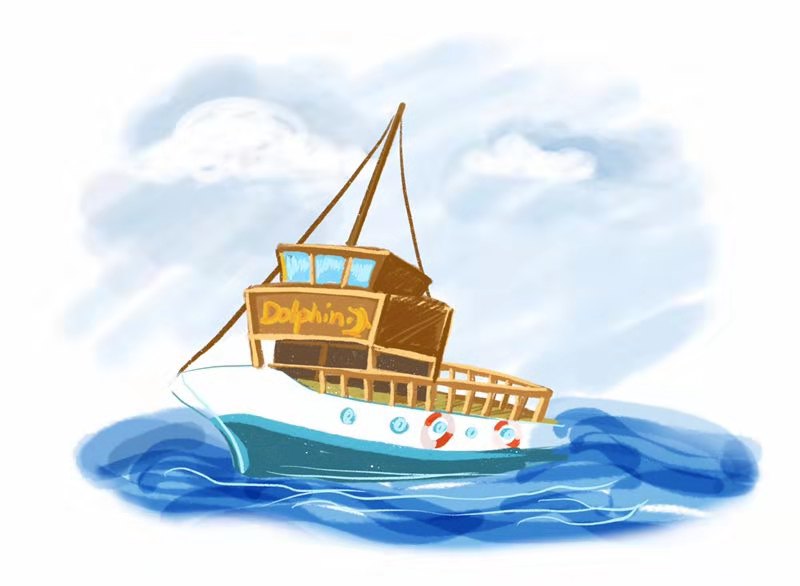
Suggested poems for comparison:
- Gifts of Rain by Seamus Heaney
Heaney’s speaker, like Constantine’s passengers, is looking for something to connect with. He grasps spade handles – a metaphor for digging up the past – asks questions, and listens intently for clues in the sound of the rain.
- Snail by Federico Garcia Lorca
This tiny poem describes the gift of a snail, inside who’s shell lies an entire ocean. You can read it in English or the original Spanish here.
Additional Resources
If you are teaching or studying Watching for Dolphins at school or college, or if you simply enjoyed this analysis of the poem and would like to discover more, you might like to purchase our bespoke study bundle for this poem. It’s only £2 and includes:
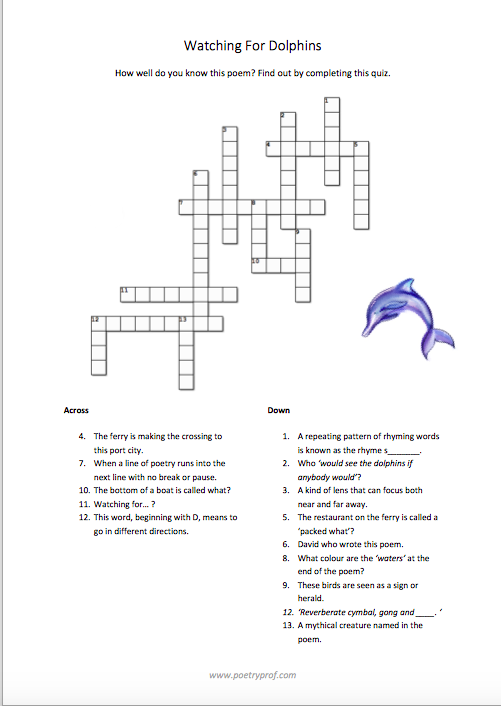
- 4 pages of activities that can be printed and folded into a booklet for use in class, at home, for self-study or revision.
- Study Questions with guidance for how to answer in full paragraphs.
- A sample Point, Evidence, Explanation paragraph for essay writing.
- An interactive and editable powerpoint, giving line-by-line analysis of all the poetic and technical features of the poem.
- An in-depth worksheet with a focus on rhyme.
- A fun crossword-quiz, perfect for a recap lesson or for revision.
- 4 practice Essay Questions – and one complete model Essay Plan.
And… discuss!
Did you enjoy David Constantine’s poem? What do the dolphins represent for you? How did you feel at the end of the poem? Why not leave a comment, start a discussion or share your ideas in the comment section below. And, for daily nuggets of analysis and all-new illustrations, don’t forget to find and follow Poetry Prof on Instagram.
Hi,
I have just bought as many of Songs of Yourselves Volume 2 as you have done. Absolutely brilliant Powerpoints! I can’t seem to email you directly but would be very interested if you are going to be making the remainder of Volume 2.
Hi Nick,
Thank you for your feedback and for downloading the study materials. I hope they prove to be helpful.
Yes, we are working on more poems right now. It takes some time to prepare each one – watch this space.